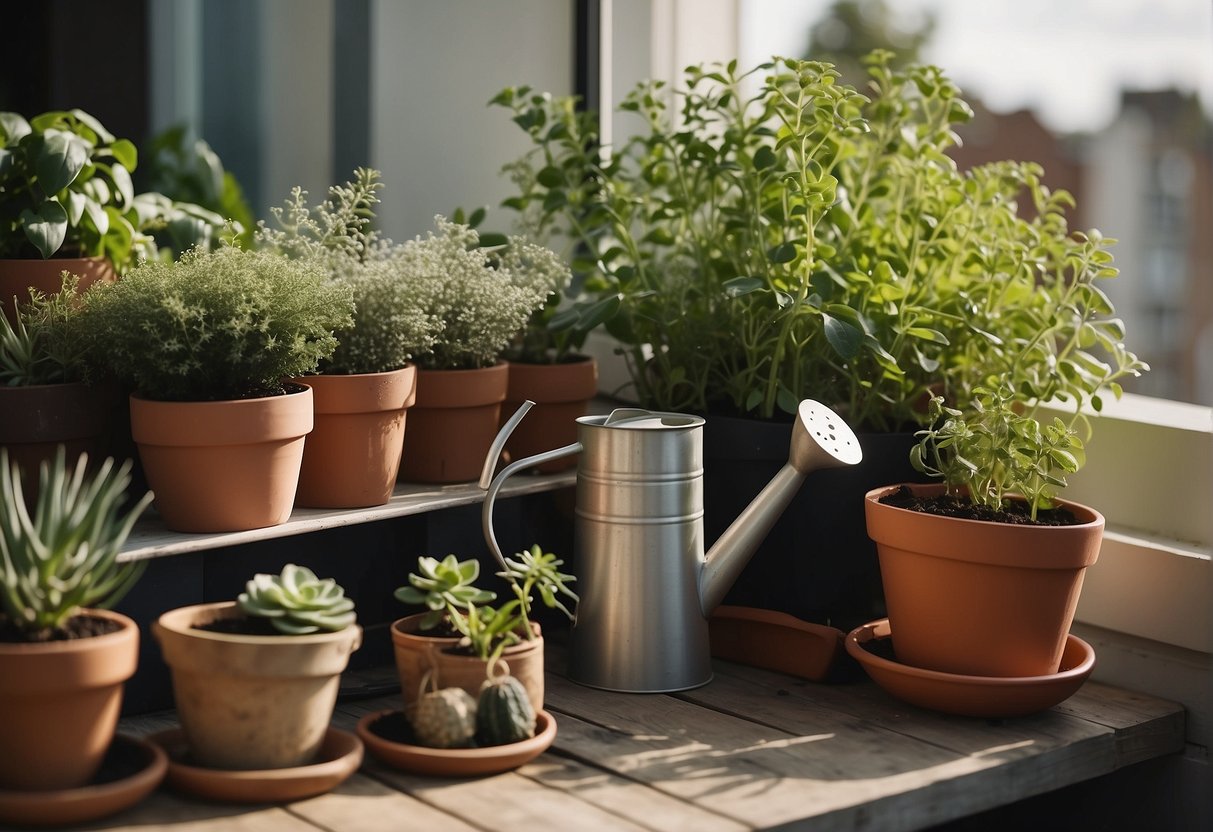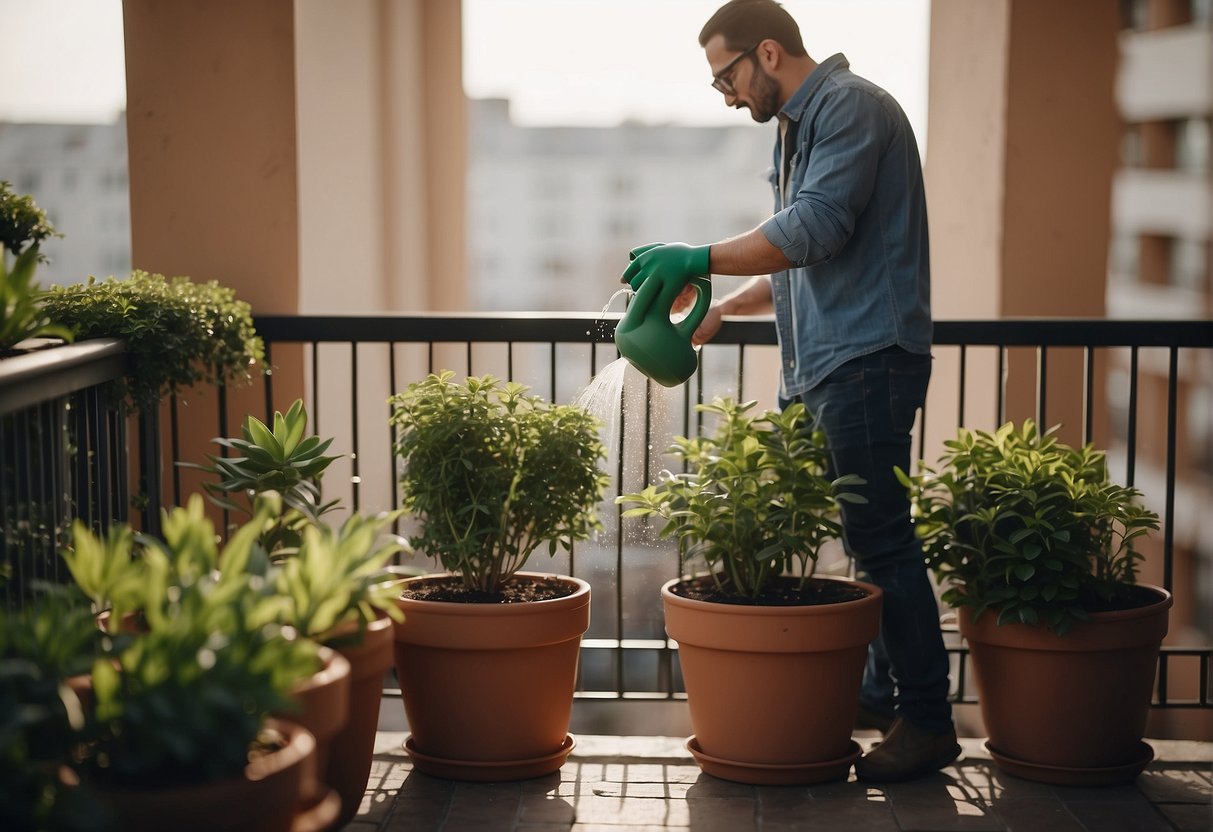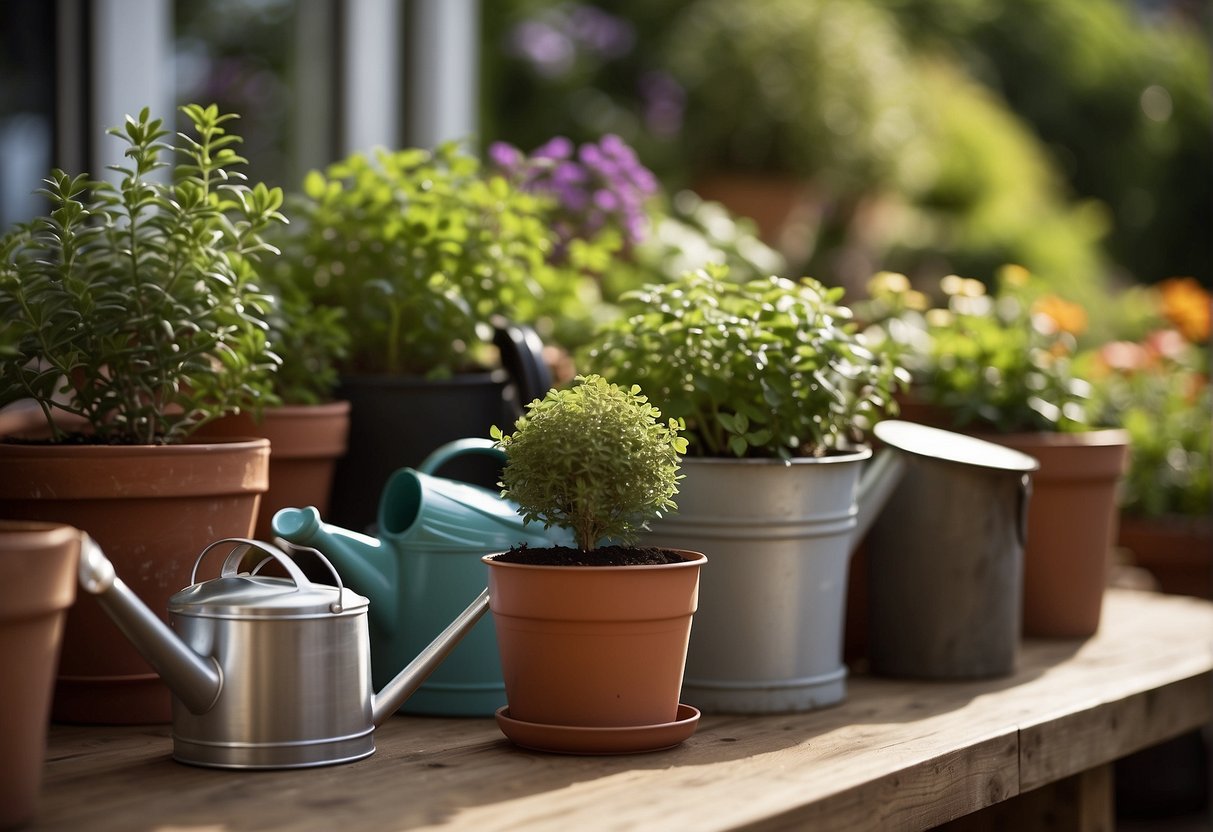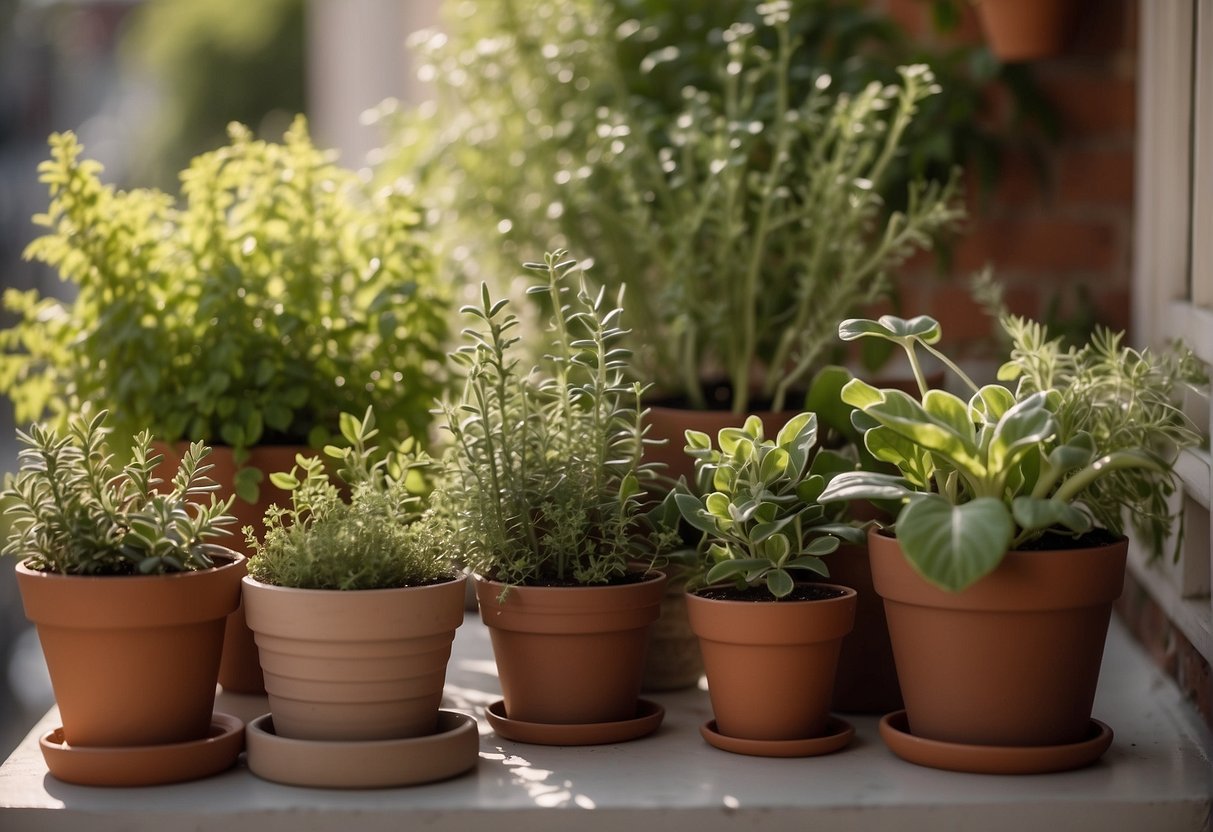Container Gardening for Beginners: Tips and Tricks for Starting Your Own Garden
Container gardening is a great way for beginners to get started with gardening. It is a form of gardening that involves growing plants in containers rather than in the ground. This type of gardening is perfect for people who have limited space or who live in apartments or other small spaces. It is also a great way to grow plants that might not thrive in your area’s soil.

One of the benefits of container gardening is that it allows you to have more control over the environment in which your plants grow. You can choose the type of soil, the amount of water, and the amount of sunlight that your plants receive. This makes it easier to create the perfect growing conditions for your plants. Container gardening also allows you to move your plants around if necessary, which can be helpful if you need to protect them from extreme weather conditions.
If you are new to gardening, container gardening is a great place to start. It is a low-risk way to try out gardening without making a big investment in time or money. With a little bit of knowledge and some basic supplies, you can start growing your own plants in no time.
Choosing the Right Containers
When it comes to container gardening, choosing the right containers is crucial for the success of your plants. Several factors should be considered before making your purchase, such as the material, size, and drainage holes. In this section, we will discuss the different aspects to consider when choosing the right containers for your plants.
Material Matters: Pros and Cons
Containers come in various materials, including plastic, wooden, ceramic, and metal. Each material has its advantages and disadvantages. Plastic containers are lightweight, affordable, and come in various sizes and colors. Wooden containers are durable, provide good insulation, and look aesthetically pleasing. Ceramic containers are attractive and come in various shapes and sizes, but they can be heavy and breakable. Metal containers are also durable and come in various styles, but they can get hot and damage plant roots.
Food-grade plastic containers are an excellent option for growing edibles, as they are safe and non-toxic. Troughs, whiskey barrels, and buckets are ideal for growing vegetables and herbs, while hanging baskets are perfect for trailing plants.
Size and Depth for Healthy Roots
The size and depth of the container play a crucial role in the health of your plants. A container that is too small can restrict root growth and lead to stunted growth and poor health. A general rule of thumb is to choose a container that is at least twice the size of the plant’s root ball. For example, a 5-gallon container is suitable for growing a tomato plant.
The depth of the container is also important, as it determines the depth of the root system. Shallow-rooted plants, such as lettuce and herbs, require a container that is at least 6 inches deep. In contrast, deep-rooted plants, such as tomatoes and peppers, require a container that is at least 12 inches deep.
Importance of Drainage Holes
Proper drainage is essential for container gardening. Without drainage holes, water can accumulate in the container and drown the roots, leading to root rot and plant death. When choosing a container, ensure that it has sufficient drainage holes. If the container does not have drainage holes, you can drill them yourself.
In conclusion, choosing the right container is essential for the success of your container garden. Consider the material, size, depth, and drainage holes when making your purchase. With the right container, your plants will thrive and provide you with a bountiful harvest.
Soil and Compost
Container gardening requires a good potting mix that is rich in nutrients and able to retain moisture. In this section, we will discuss how to select the right potting mix and how to enhance the soil with compost and fertilizers.
Selecting the Right Potting Mix
When selecting a potting mix, it is important to choose one that is specifically formulated for container gardening. Garden soil is too dense and heavy for containers, and can lead to poor drainage and root rot. Potting soil, on the other hand, is designed to be lightweight and well-draining, making it ideal for containers.
Look for a potting mix that contains a blend of peat moss, perlite, and vermiculite. Peat moss helps to retain moisture, while perlite and vermiculite improve drainage and aeration. Some potting mixes may also contain slow-release fertilizers, which can help to provide nutrients to your plants over time.
Enhancing Soil with Compost and Fertilizers
In addition to using a good potting mix, it is also important to enhance the soil with compost and fertilizers. Compost is a natural fertilizer that is rich in nutrients and can help to improve soil structure and fertility. You can make your own compost by collecting kitchen scraps and yard waste, or you can purchase compost from a garden center.
To use compost in your container garden, simply mix it into the potting mix before planting. You can also add organic fertilizers, such as fish emulsion or blood meal, to provide additional nutrients to your plants.
It is important to note that container-grown plants may require more frequent fertilization than plants grown in the ground, as nutrients can leach out of the soil more quickly. Be sure to follow the instructions on the fertilizer package, and avoid over-fertilizing, as this can lead to burned roots and other problems.
By selecting the right potting mix and enhancing the soil with compost and fertilizers, you can create a healthy and productive container garden.
Plant Selection and Care

When it comes to container gardening, selecting the right plants is crucial for a successful harvest. Beginners should start with easy-to-grow vegetables and herbs, such as lettuce, radishes, tomatoes, peppers, carrots, corn, squash, spinach, eggplant, and broccoli. These plants are low-maintenance and can thrive in small spaces, making them perfect for containers.
Vegetables and Herbs for Beginners
Lettuce and spinach are great options for beginners, as they grow quickly and can be harvested multiple times throughout the season. Radishes and carrots are also easy to grow and can be harvested within a month of planting. Tomatoes, peppers, and eggplants require a bit more care, but can yield a bountiful harvest if properly tended to. Herbs such as basil, thyme, and parsley are also great for container gardening, as they require minimal space and can be used to add flavor to a variety of dishes.
Flowers and Ornamental Plants
In addition to vegetables and herbs, beginners may also want to consider adding some flowers or ornamental plants to their container garden. Shade-loving plants such as impatiens, begonias, and ferns are great for adding color to shady areas. Succulents and cacti are also popular choices for container gardens, as they require minimal watering and can add a unique touch to any space.
Understanding Sunlight and Shade Needs
When selecting plants for a container garden, it is important to consider their sunlight and shade needs. Some plants, such as tomatoes and peppers, require full sun to thrive, while others, such as lettuce and spinach, prefer partial shade. It is important to place containers in areas that receive the appropriate amount of sunlight for the plants being grown. Additionally, it is important to water container gardens regularly, as they can dry out quickly in hot weather.
By selecting the right plants and providing them with proper care, beginners can enjoy a bountiful harvest from their container garden.
Watering and Drainage

Watering Techniques for Container Gardens
Proper watering is essential for the health and growth of container plants. Overwatering or underwatering can harm the plant’s roots and lead to stunted growth or even death. The frequency of watering depends on various factors such as the type of plant, pot size, and weather conditions.
One effective technique is to water deeply and thoroughly, allowing the water to penetrate the soil and reach the roots. It’s better to water in the morning or evening to avoid evaporation during the hot midday sun. A good rule of thumb is to water when the top inch of soil feels dry to the touch.
Another technique is to use self-watering containers that have a reservoir at the bottom. These containers automatically supply water to the plant as needed, reducing the risk of overwatering or underwatering.
Preventing Waterlogging and Root Rot
Proper drainage is crucial for container plants to prevent waterlogging and root rot. When the soil is waterlogged, it deprives the roots of oxygen, leading to root rot and eventually killing the plant.
To ensure proper drainage, use a pot with drainage holes at the bottom. Elevating the pot with pot feet can also improve drainage by allowing excess water to escape. It’s essential to use a well-draining soil mix that allows excess water to drain away from the roots.
Regularly inspect the plant’s roots and soil for any signs of waterlogging or root rot, such as yellowing leaves or a foul odor. If detected, it’s essential to take immediate action by reducing watering and improving drainage to prevent further damage.
In summary, proper watering and drainage are essential for the health and growth of container plants. By following these techniques, beginners can ensure their plants thrive and avoid common pitfalls such as overwatering or waterlogging.
Maintaining Your Container Garden

Container gardening is a great way for beginners to get started with growing plants, especially for those who have limited space. However, maintaining a container garden requires some effort and attention to ensure that the plants grow healthy and produce a bountiful harvest. Here are some tips for maintaining your container garden.
Regular Feeding and Fertilizing
Plants in containers require regular feeding and fertilizing to thrive. It is recommended to use a slow-release fertilizer or liquid seaweed every two weeks during the growing season. This will provide the plants with the necessary nutrients to produce healthy foliage, flowers, and fruits.
Pest Control and Disease Prevention
Pests and diseases can be a problem for plants in containers. To prevent infestations, it is important to keep the plants healthy and well-fed. Regularly inspect the plants for any signs of pests or diseases and take action immediately if any are detected. Use organic pest control methods such as neem oil or insecticidal soap to control pests. For diseases, remove any infected plant parts and dispose of them properly.
Pruning and Harvesting Tips
Pruning is essential for maintaining healthy plants and promoting growth. Regularly remove any dead or damaged plant parts and prune the plants to maintain their shape and size. Harvesting is also important to ensure that the plants continue to produce fruit and vegetables. It is recommended to harvest regularly and not wait until the fruits or vegetables are overripe.
In addition, it is important to space the plants properly to prevent overcrowding, which can lead to poor growth and disease. Mulching around the plants can also help to retain moisture and prevent weeds.
Overall, maintaining a container garden requires some effort, but with the right care and attention, you can enjoy a bountiful harvest of healthy plants, fruits, and vegetables.
Frequently Asked Questions

How do you start a container garden for beginners?
Starting a container garden for beginners is easy and straightforward. First, choose a location that receives ample sunlight and is easily accessible for watering and maintenance. Next, select the appropriate containers and soil. It is recommended to use containers that are at least 12 inches deep and have drainage holes. Fill the containers with a high-quality potting mix, and choose plants that are suitable for container gardening. Finally, water the plants regularly and fertilize as needed.
What are the best containers for growing vegetables?
The best containers for growing vegetables are those that are at least 12 inches deep and have drainage holes. Some popular options include plastic pots, ceramic pots, and fabric pots. It is important to choose containers that are appropriate for the size of the plant and provide adequate space for root growth.
What plants thrive in container gardens?
Many plants thrive in container gardens, including herbs, vegetables, flowers, and small fruits. Some popular options for beginners include tomatoes, peppers, lettuce, herbs, and strawberries. It is important to choose plants that are suitable for the amount of sunlight and space available in your container garden.
What are some common challenges or disadvantages of container gardening?
Some common challenges or disadvantages of container gardening include the need for frequent watering, the potential for soil to dry out quickly, and the limited space available for plant growth. Additionally, some containers may become too heavy to move once filled with soil and plants.
Can you provide a basic container garden layout for growing vegetables?
A basic container garden layout for growing vegetables may include a 12-inch deep container filled with a high-quality potting mix. Depending on the size of the container, you may be able to grow multiple plants, such as a tomato plant and a pepper plant. It is important to provide adequate space for root growth and to choose plants that are suitable for the amount of sunlight available in your container garden.
What are some cost-effective materials or methods for DIY container gardening?
Some cost-effective materials or methods for DIY container gardening include using recycled materials such as plastic bottles or buckets, repurposing old furniture or containers, or building your own containers using inexpensive materials such as wood or cinder blocks. It is important to ensure that any containers you use have adequate drainage and are suitable for the plants you wish to grow.
